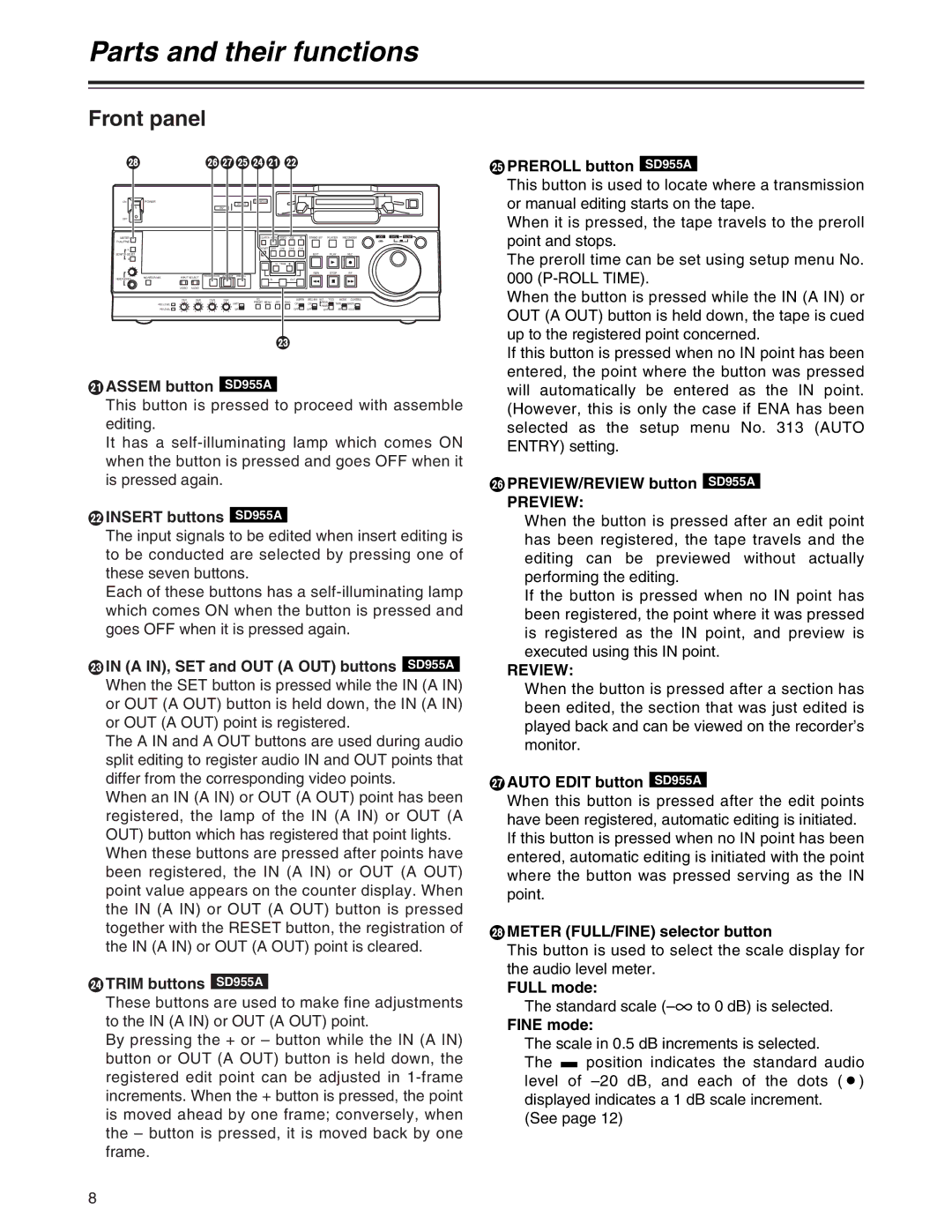AJ-SD930, AJ-SD955A specifications
The Panasonic AJ-SD955A and AJ-SD930 are noteworthy additions to the world of professional video production, combining cutting-edge technology with user-friendly features. Both models are designed for broadcast and post-production environments, offering high-quality video capture and playback at an impressive level of performance.The AJ-SD955A is a versatile digital disk recorder that supports a wide range of formats, including DV and DVCPRO. This model stands out due to its capability to record in both standard definition and high definition, making it suitable for various production requirements. One of its main features is its dual-slot P2 card system, which allows for hot-swappable memory cards, enabling uninterrupted recording and extended shooting times. This flexibility is invaluable in fast-paced production settings.
The AJ-SD930 is a more compact option, ideal for mobile applications. Like the AJ-SD955A, it supports both DV and DVCPRO formats, but it offers slightly fewer advanced features, focusing instead on portability and user convenience. The SD930 includes balanced audio inputs, a built-in LCD monitor, and a straightforward interface that allows for intuitive operation in the field.
Both models utilize MPEG-2 compression technology, providing high-quality video while minimizing file sizes. This is particularly important for content that demands efficient storage and fast transfer rates. Additionally, they support both 16-bit linear PCM audio and embedded audio recording, catering to professionals who require top-notch audio fidelity alongside their video.
The build quality of both the AJ-SD955A and AJ-SD930 is robust, making them suitable for rigorous use in various environments. The devices feature extensive connectivity options, including SDI and analog outputs, which facilitate seamless integration into existing production setups. This versatility ensures that users can adapt to different workflows with ease.
In conclusion, the Panasonic AJ-SD955A and AJ-SD930 are exemplary choices for professionals seeking reliable and high-quality video recording solutions. Their combination of innovative technology, flexibility, and durable design makes them indispensable tools for anyone serious about video production, whether in a studio or on location. With their ability to deliver outstanding performance while accommodating evolving industry standards, they remain relevant in the ever-changing landscape of professional videography.

